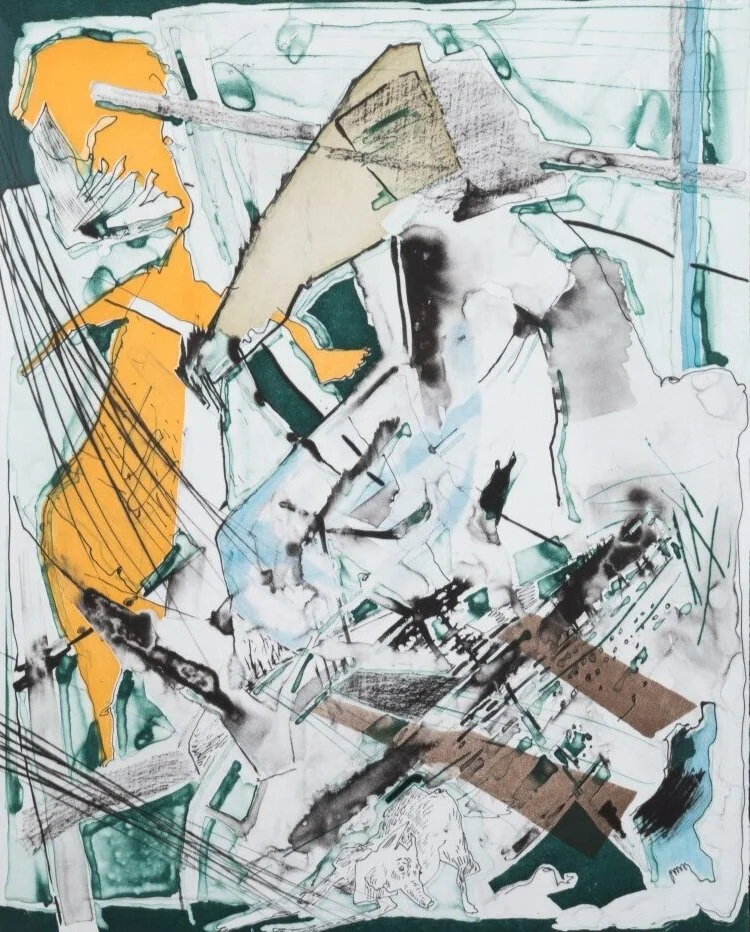Quilted in Community
/The Sunflower Quilting Bee at Arles by Faith Ringgold
Faith Ringgold, The Sunflower Quilting Bee at Arles, 1996, 9-color lithograph, Museum Purchase through the General Acquisitions Fund, Dedicated to the Friends of the Polk Museum of Art, on the Occasion of the Museum's 50th Anniversary, 2016, Polk Museum of Art Permanent Collection 1997.17
We love exploring pieces from our permanent collection! What can The Sunflower Quilting Bee at Arles teach us about today's current circumstances and unity?
Faith Ringgold is an American artist who was born in 1930. She is known for working across media and for her beautiful but scathing social observations. The Sunflower Quilting Bee at Arles is a lithograph that is loaded with metaphor and social critiques.
At the center of the painting, nine prominent African American women surround a quilt of sunflowers, embodying the sense of community among them while also referencing the artist lurking behind them. The name of each woman is “stitched” in the quilt before them, while the left hem of the quilt identifies the group as “The Sunflower Quilters Society of America.”
The painter whose name has become synonymous with the French town of Arles, Vincent Van Gogh, looks on from the top right corner of the print, himself a prominent painter and observer of sunflowers. His presence is a bit odd, and he is isolated from the rest of the group. Perhaps this is a commentary on race relations at the time the lithograph was produced? Maybe it refers more to continuing gender and racial inequality in the art world and the academic reverence for painting that pushed quilt-making into the inferior role of domestic “craft.” Maybe we can glean a timelier message from this painting – one of community and shared experiences.
The symbol of community that binds the women in the Sunflower Quilters Society of America together is a tactile one, but in Ringgold’s lithograph it is forged by something deeper than the quilt itself. The quilt stands for a set of shared experiences, external expectations, and values that bind this community together even though many of them never met face-to-face. Perhaps during a time that is characterized by social distancing and isolation, we can add to our understanding of the print with personal reflection and a deeper appreciation for the communities that we are all a part of. Of course, it is important to acknowledge that this print first and foremost honors the achievements of African American women throughout history but also teaches us the value of unity and community.
Reflection written by Emily Campbell, PMoA Intern

